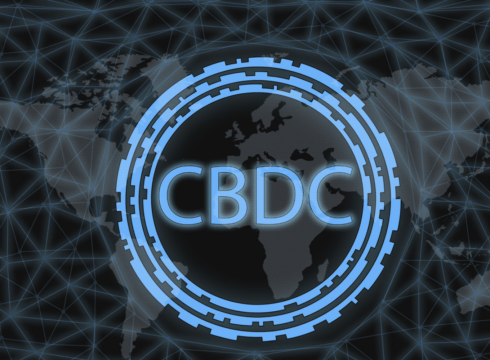The pilot would cover select locations in a closed user group comprising participating customers and merchants
The RBI has currently identified eight banks for the phase-wise pilot, including SBI and ICICI Bank
Users will be able to transact with retail digital rupee through a digital wallet offered by the participating banks and stored on mobile phones/ devices
Inc42 Daily Brief
Stay Ahead With Daily News & Analysis on India’s Tech & Startup Economy
Within a month of rolling out the first pilot of digital rupee for the wholesale segment, the Reserve Bank of India (RBI) on Tuesday announced the launch of the first pilot for retail digital rupee.
The RBI said that the first pilot of digital rupee, or the central bank digital currency (CBDC), for the retail segment will be launched on December 1, 2022.
The pilot would cover select locations in a closed user group (CUG) comprising participating customers and merchants, the central bank said.
As physical money is distributed to the common mass, retail digital rupee would also be distributed through intermediaries such as banks. Users will be able to transact with retail digital rupee through a digital wallet offered by the participating banks and stored on mobile phones/ devices.
Transactions can be made both person-to-person (P2P) and person-to-merchant (P2M). Payments to merchants can be made using QR codes displayed at merchant locations, the central bank said.
“The pilot will test the robustness of the entire process of digital rupee creation, distribution and retail usage in real time. Different features and applications of the digital rupee retail token and architecture will be tested in future pilots, based on the learnings from this pilot,” it added.
Eight banks – State Bank of India, ICICI Bank, Yes Bank, IDFC First Bank, Bank of Baroda, Union Bank of India, HDFC Bank, and Kotak Mahindra Bank – have been identified for the phase-wise pilot. The first four banks will take part in the first phase and others will join subsequently.
The pilot would initially cover four cities – Mumbai, New Delhi, Bengaluru and Bhubaneswar. It would later be extended to Ahmedabad, Gangtok, Guwahati, Hyderabad, Indore, Kochi, Lucknow, Patna and Shimla.
It must be noted that the RBI launched the wholesale version of the CBDC on November 1. The launch day saw 48 transactions worth INR 275 Cr using CBDC.
With this launch, the RBI has joined the list of central banks which have introduced their own digital currency. Out of 112 countries that think tank Atlantic Council tracks for CBDC developments, 11 countries, including Nigeria, The Bahamas, and eight East Carribean nations, have launched their CBDCs. Meanwhile, 15 countries, including Saudi Arabia, China, and Russia, have launched their CBDCs in pilot mode.
The RBI has been positioning the digital rupee as a counter to cryptocurrencies in India. “We believe that CBDCs would be able to kill whatever little case there could be for private cryptocurrencies. Any tool that can be used for good can also be put to undesirable uses. Technology, at the end of the day, is a tool,” Deputy Governor T Rabi Sankar said earlier.
A CBDC can be classified into two types – that for general purpose or retail segment and other for wholesale segment. As explained by the RBI earlier, the retail CBDC would be potentially available for use for all private sector, non-financial consumers and businesses. On the other hand, the wholesale CBDC is designed for settlement of interbank transfers and other related wholesale transactions.
Along with countering growth of private cryptocurrencies, the CBDCs have other use cases such as collection of taxes and lowering the cost of cross-border transactions. In addition, the CBDCs can also be used by those who don’t have access to smartphones, helping increase financial inclusion.
{{#name}}{{name}}{{/name}}{{^name}}-{{/name}}
{{#description}}{{description}}...{{/description}}{{^description}}-{{/description}}
Note: We at Inc42 take our ethics very seriously. More information about it can be found here.


